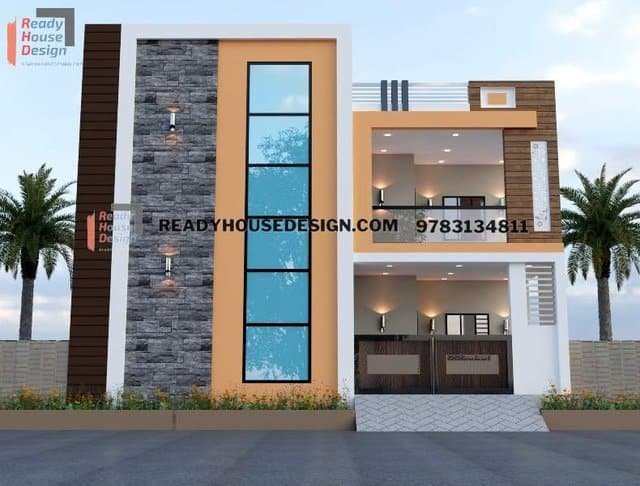eco friendly house construction in India
Building the Future: A Comprehensive Guide to Eco-Friendly House Construction in India
As the world grapples with environmental challenges, the construction industry is witnessing a paradigm shift towards eco-friendly practices. In India, where rapid urbanization and population growth present unique challenges, adopting sustainable construction methods is imperative. This guide explores the principles, benefits, challenges, and actionable steps involved in eco-friendly house construction in India, providing a roadmap to build homes that are not just shelters but contributors to a greener, healthier planet.

1. Understanding Eco-Friendly House Construction:
Eco-friendly house construction, often termed as green building, is an approach that prioritizes sustainability, energy efficiency, and environmental responsibility. From the initial design to the choice of materials and the final construction, every step is geared towards minimizing the ecological impact of the building.
2. Key Principles of Eco-Friendly Construction:
Understanding the core principles is crucial for anyone embarking on the journey of eco-friendly house construction:
a. Energy Efficiency:
Designing homes with energy efficiency in mind is foundational. Utilize energy-efficient appliances, employ passive solar design, and insulate homes effectively to reduce dependence on non-renewable energy sources.
b. Sustainable Materials:
Opt for sustainable and renewable materials like bamboo, recycled steel, and reclaimed wood. These choices minimize environmental impact and promote responsible resource utilization.
c. Water Conservation:
Implement water-saving technologies, harvest rainwater, and use low-flow fixtures to conserve water resources, addressing concerns related to water scarcity.
d. Waste Reduction and Recycling:
Minimize construction waste by efficient management and recycling practices. Eco-friendly construction aims to reduce waste sent to landfills and repurpose materials whenever possible.
e. Natural Ventilation and Lighting:
Leverage natural elements such as wind and sunlight for ventilation and lighting. This not only reduces energy consumption but also creates a healthier indoor environment.
f. Landscaping and Green Spaces:
Integrate green spaces and landscaping to enhance aesthetics, promote biodiversity, and mitigate heat island effects, contributing to overall environmental well-being.
3. Benefits of Eco-Friendly House Construction:
Embracing eco-friendly practices yields a host of benefits:
a. Reduced Environmental Impact:
Minimizing resource consumption, utilizing sustainable materials, and optimizing energy efficiency significantly reduce the environmental impact of construction.
b. Lower Operating Costs:
While the initial investment might be higher, energy-efficient designs and renewable energy sources result in lower utility bills over the long term.
c. Improved Indoor Air Quality:
Eco-friendly construction prioritizes natural ventilation, non-toxic materials, and proper insulation, contributing to better indoor air quality and the health of occupants.
d. Enhanced Resale Value:
Homes with sustainable features often have a higher resale value, attracting environmentally-conscious buyers and contributing to long-term financial returns.
e. Government Incentives:
Various levels of government in India offer incentives and subsidies for eco-friendly construction, including tax benefits, grants, or reduced interest rates on loans.
4. Challenges in Eco-Friendly House Construction in India:
While the benefits are compelling, eco-friendly construction faces challenges in India:
a. Awareness and Education:
Limited awareness regarding the principles and benefits of eco-friendly construction hinders widespread adoption. Education and outreach efforts are crucial to promote understanding.
b. Higher Initial Costs:
The upfront costs of eco-friendly construction can be higher than conventional methods, deterring some potential homeowners despite long-term savings.
c. Limited Availability of Sustainable Materials:
Access to a wide range of sustainable materials can be challenging in certain regions of India, impacting the ability to implement eco-friendly practices.
d. Resistance to Change:
Resistance to adopting new, eco-friendly practices is common. Overcoming this resistance requires efforts from builders, architects, and policymakers to demonstrate the benefits.
5. Actionable Steps for Eco-Friendly House Construction:
Embarking on an eco-friendly construction journey involves a series of actionable steps:
a. Site Selection and Design:
Choose a site that maximizes natural light and ventilation. Incorporate passive solar design principles to optimize energy efficiency.
b. Energy-Efficient Appliances:
Install energy-efficient appliances and lighting fixtures. Consider the use of solar panels or other renewable energy sources for power generation.
c. Water Conservation Techniques:
Implement water-saving technologies such as rainwater harvesting, graywater systems, and low-flow fixtures to minimize water consumption.
d. Sustainable Materials:
Prioritize the use of sustainable and locally sourced materials. Consider alternatives like recycled steel, bamboo, and reclaimed wood.
e. Waste Management Plan:
Develop a comprehensive waste management plan to minimize construction waste. Recycle and repurpose materials whenever possible.
f. Green Roofing and Insulation:
Explore green roofing options, which not only provide insulation but also contribute to biodiversity. Invest in high-quality insulation materials to reduce energy needs for heating and cooling.
g. Landscaping with Native Plants:
Incorporate landscaping with native, drought-resistant plants that require less water. This contributes to biodiversity and reduces the need for extensive irrigation.
h. Community Engagement:
Engage with local communities to create awareness and garner support for eco-friendly construction. Share the benefits and long-term advantages with neighbors and stakeholders.

